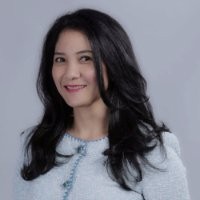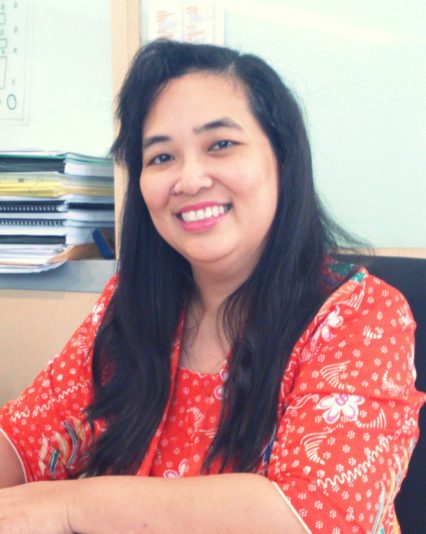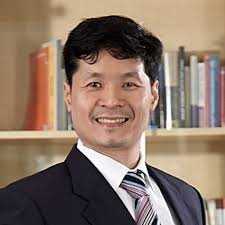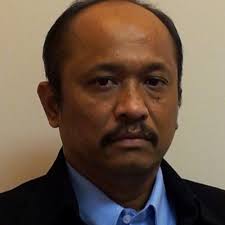Case Document
BSD CITY : BIG CITY, BIG OPPORTUNITY
Preconceptions about models of housing in Indonesia had begun to emerge since the ancient kingdoms in Indonesia. In each chapter of its history every kingdom had a housing concept that was almost the same, although in the model and style of the building were sometimes different.
Various models and styles of Europe were presented by the Dutch in the development of housing in Indonesia when the Dutch came to power in Indonesia in the 15th century AD. Old patterns that putt Kraton as the center of every things then shifted in the arrangement of the economic center which became the foundation of the city arrangement.
From the two models of housing that exist at the time, was an embryo for the emerging of business and property developers in Indonesia. Then that management is more neatly arranged by the government of Indonesia. This can be seen by the emerged of Perum Perumnas, BTN, and etc. Besides models of the building that existed have more styles and a variety of models.
Until 2009, the population in Jakarta was 7,871,215 peoples, as stated by Abdul Kadir as the Head of the Population and Civil Records of DKI Jakarta. With the rapid development of economic activities and with the creation of new employment fields had attracted workers from outer area, had lead to urbanization problems. Uncontrolled urbanization had caused various problems, including the emergence of imbalances.
With such an imbalance, there arose a variety of other problems such as lack of discipline of life, security, slum areas, homeless, crime, health activities, education, urban transportation and etc. Thus, the rapid population growth was the major problem that was greatly influenced the development of Jakarta, and therefore the need for government to made policies surrounding buffer area of Jakarta, including Tangerang.
ALLIANZ INDONESIA: LEADERSHIP TRANSFORMATION
When Jens Reisch was appointed as CEO of Allianz Life Indonesia in 2003, the company’s financial figures were far from outstanding. In the earlier years, Allianz focused on business expansion and opened branches throughout Indonesia. During that period, Allianz also attempted to build strong brand but this was a financial burden; the company reported a loss of Rp 102.86 billion in 2002. The condition was exacerbated by the financial chaos in the early 2000’s. To improve the situation, the new appointee and his team had to work extra miles for the company to earn profits.
Considering the company’s difficulties, Jens had to engage in a major transformation, first by changing the marketing process from the branch system to the agency system, to the extent that he had to shut down most of Allianz branches in Indonesia and lay off hundreds of employees. That was the toughest decision he and the management team faced during that period. In addition, Jens had to improve employee productivity during the crisis period through the enhancements in motivation, morale, commitment, and trust.
SPREAD THE WINGS, CHALLENGE THE GIANT : BLITZMEGAPLEX VS 21 CINEPLEX
Drizzling rain at that morning had not subsided since last night when Mrs. Wendy Soeweno, director of marketing Blitzmegaplex drove her car into the office parking lot. She walked to her desk and prepared meetings with the marketing team of Blitzmegaplex. That day, two days before the meeting with the board of commissioners and board of directors, in the meeting room located at Jalan Patra Kuningan VII No.14 Jakarta Selatan, Blitzmegaplex marketing team led by Mrs Wendy Soeweno has prepared the data, both internal and external company to determine their future strategy.
Meetings were accompanied by faint sound of rain that lasted a serious but relaxed. The marketing team Blitzmegaplex expressed their own opinions, debate and argue, what company should to do after reporting 21 Cineplex to KPPU on June 5, 2009? Whether the decision was the right action in the face of the major competitors Blitzmegaplex? What was about the rest of their strategy in dealing with counter-attack of 21 Cineplex? No less important was the other competitors either directly or indirectly, which also would influenced the existence Blitzmegaplex in the cinema industry in Indonesia.
RANCH MARKET: PURSUING PREMIUM SUPERMARKET
This case describes the story of Ranch Market Indonesia from 1998 to 2003. In this period, with regard to their expansion, Ranch Market was willing to open its third store in Jakarta. Mr. Nugroho had several options regarding the location, store concept, and target market.
The students are expected to learn segmentation, target market selection, and retail positioning. Segmentation is a combination of retail segmentation and regular segmentation, with each completing the other. Selection of the target market is not only for consumers to be served, but also includes location since this case discusses the opening of outlets. The positioning discussion focuses on the concept of store and position relative to other retail stores. Discussion of the store concept is interesting because Ranch Market has a unique concept and a narrow target.
SOUR SALLY: A BRAND FROM THE HEART
This case illustrates how Sour Sally’s brand was built. The process of development, including brand positioning, brand formulation, and brand delivery, is presented. This can be used to develop a discussion about brand equity, brand positioning, brand formulation, and brand delivery. In this case, brand positioning was formulated by specifying a Point of Parity (PoP), which is a product category that will be entered and set by the PoD (Point of Difference), which contains the key to brand differentiation by Sour Sally.
At the initial launch, Sour Sally occupied a new category. It was a pioneer in the frozen yogurt category and competed with a nearby cross-category, ice cream. Sour Sally also seeks to provide differentiation by building the perception of USA’s brand, that is, by using the tag line "U.S. Premium" and "Non-Fat" Frozen Yogurt as a way to provide tranquility for the customers to consume this "ice cream" yogurt. Sour Sally's brand positioning was for a target market comprising women within 15 to 45 years of age.
After setting its position, Sour Sally performed brand formulation which contained: name, logo, design, packaging, and the identity of Sally's own figure. Brand delivery was done with an emphasis on public relations and customer relations compared with advertising. PR function was done through various print and online media. Customer relationship was engaged via community marketing through networking websites and members.
CENTRAL PROTEIN PRIMA: SHRIMP BUSINESS
As Gunawan Taslim, Director of PT Central Protein Prima, flew from Jakarta to Lampung in June 2009, he thought about the decision he must soon make on CP Prima’s strategic action to some problems from declining orders affected by global crisis, rejection from US Custom for their 37 containers contained frozen shrimp product, accusation from Shrimp Club Indonesia (SCI) that the company would re-sell the rejected product into domestic market while the frozen shrimp product should be exported to overseas market, to a failure of shrimp harvest caused by virus disease. He was due to attend a meeting with Board of Commissioners in early July 2009. Gunawan thought, “The good news is the sales increased almost 39% in the last September comparing to last year. The bad news is we still can not find the market to re-sell our rejected 37 containers from US Custom.”
This was a critical decision for Gunawan and CP Prima. An increasing leverage and rupiah depreciation caused by global crisis would affect cash flow position. The declining cash flow position could lead a default on debt covenant. The default could lead a declining rating on CP Prima obligation position.
RENDER FARM INITIATIVE
APMI, a non-profit organization for multimedia industry, served as a platform that associated communications among the industry stakeholders such as vendors, academics, and the government. These stakeholders were convinced that the industry would have grown faster if there were more facilities to encourage the creation of the content.
Hence Brata T. Hardjosubroto who acted as the chairman of APMI together with a government body, initiated to form a community (called MIKTI) to encourage the production of information technology-based multimedia contents. At the same time he carried out concepts into action by building a render farm facility to encourage the digital content creations.
On September 2008, the render farm facility was ready to operate, and MIKTI was due to launch. Hardjosubroto and APMI realized that they needed to stick back to their vision and mission, and let the development of the content advances through MIKTI. Together with some political and technical situations, Hardjosubroto and his team must decide on who would run the render farm facility.
PT BAKRIE AND BROTHERS TBK.: THE COST OF CAPITAL
As one of the major investment companies in Indonesia, PT Bakrie & Brothers Tbk (called BB) is considering a major expansion of the business, growth through internal investment (organic), or invests by acquiring other companies (inorganic). From the firm's perspective, the investors' expected return is a cost of using the funds, called the cost of capital. A variety of factors influencing a firm's cost of capital, such as level of interest rates, tax policies, and the regulatory environments. The degree of risk in the projects it undertakes and the types of funds it raises both have a profound effect on its cost of capital.
DEBT RESTRUCTURING OF PT CIPUTRA DEVELOPMENT TBK
PT Ciputra Development Tbk was one of the leading property companies in Indonesia. Their property projects were built in several major cities and had a well-known reputation. Two of its subsidiaries were also listed on the Stock Exchange Indonesia, PT Ciputra Surya Tbk and PT Ciputra Property Tbk.
PT Ciputra Development Tbk had total assets of Rp. 9 trillion at the end of September 2010 increased from Rp. 5.3 trillion at the end of 2005. Equity also increased from a negative Rp. 96 billion at the end of 2005 to Rp. 4.78 trillion in late September 2010. On the other hand, the company held cash and cash equivalents Rp. 2.133 trillion, bank loans Rp. 210 billion to various banks, and customer advances was Rp. 1.341 trillion in the end September 2010. The customer advances was Rp. 1.341 trillion as of end September 2010. That is, companies did a very significant progress in the last six years.
However, this was not always the case. On the severe financial crisis on 1997, the company suffered very much from huger losses, mostly because of the foreign exchange debt. The foreign currency debt reached nearly U.S. $ 200 million. With the exchange rate reached Rp 16.000 per dollar, it made the company shuffled. Payable in foreign currencies were very large and negative equity made the company should take action to survive.
CRUDE PALM OIL AFTER CRISIS 2008
On Asian crisis 1998, the palm owner and businessman still could face the crisis smugly. The base price of crude palm oil (CPO) for one fresh stem of oil palm (tandan buah segar) was USD 600 per ton, but with the exchange rate of Rp 16.000 per 1 USD, the producers were quite blessed from the crisis condition. With the average area owneship was at minimum 2,5 hectare each farmers with the output of 2 tons per hectare crude palm oil, the farmers gained at least USD 12.000 (2,5 hectare x 2 tons x USD 600).
The reason was the demand of CPO was still high. Even in China, although it was in Asian region, its economic was growing. It happened also in India. In Europe, countries like Germany and Netherlands were consumers of crude palm oil originated from Indonesia and Malaysia. It was very much affected positively the farmers and the local economic.
A very different story came up on crisis on September 2008. The price of CPO declined and so was the demand. The producers were on the edge of the egg. A lot of TBS were left unharvested by the farmers because the price went down to Rp 300 per kg from Rp 1.200-1.400. Big players in Indonesia and Malaysia were oversupplied. The firms were to hold on their expansion or to hold the planting.
The crude palm oil was now a disaster. If before it was a green gold, now it was a dead card. Victims were tumbling down. Now, could the price shine again on the next year? A lot of people depended on bio fuel programs in most countries as an anchor price. It that was the case, the CPO price would be better. The problem was the oil price was on the bullish and made the bio fuel was more expensive than the fuel.
Now the case questions were what the producers should do? What government should do? What were the real threats on this business? How could we control the prices? How could we adjust with macroeconomics environment? If Indonesia had a comparative advantage for area of plantation, would it be still comparative advantage or became big liabilities? Why Indonesia did not start to develop the downstream crude palm oil industry?







